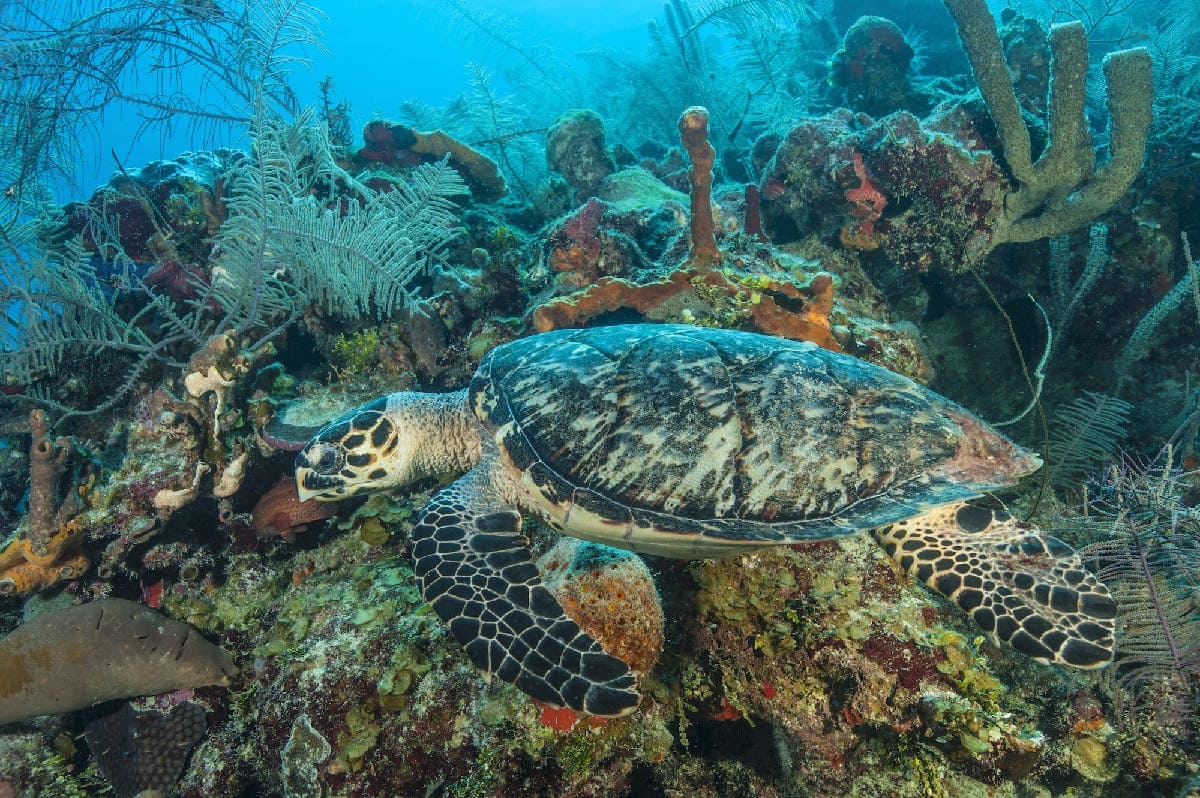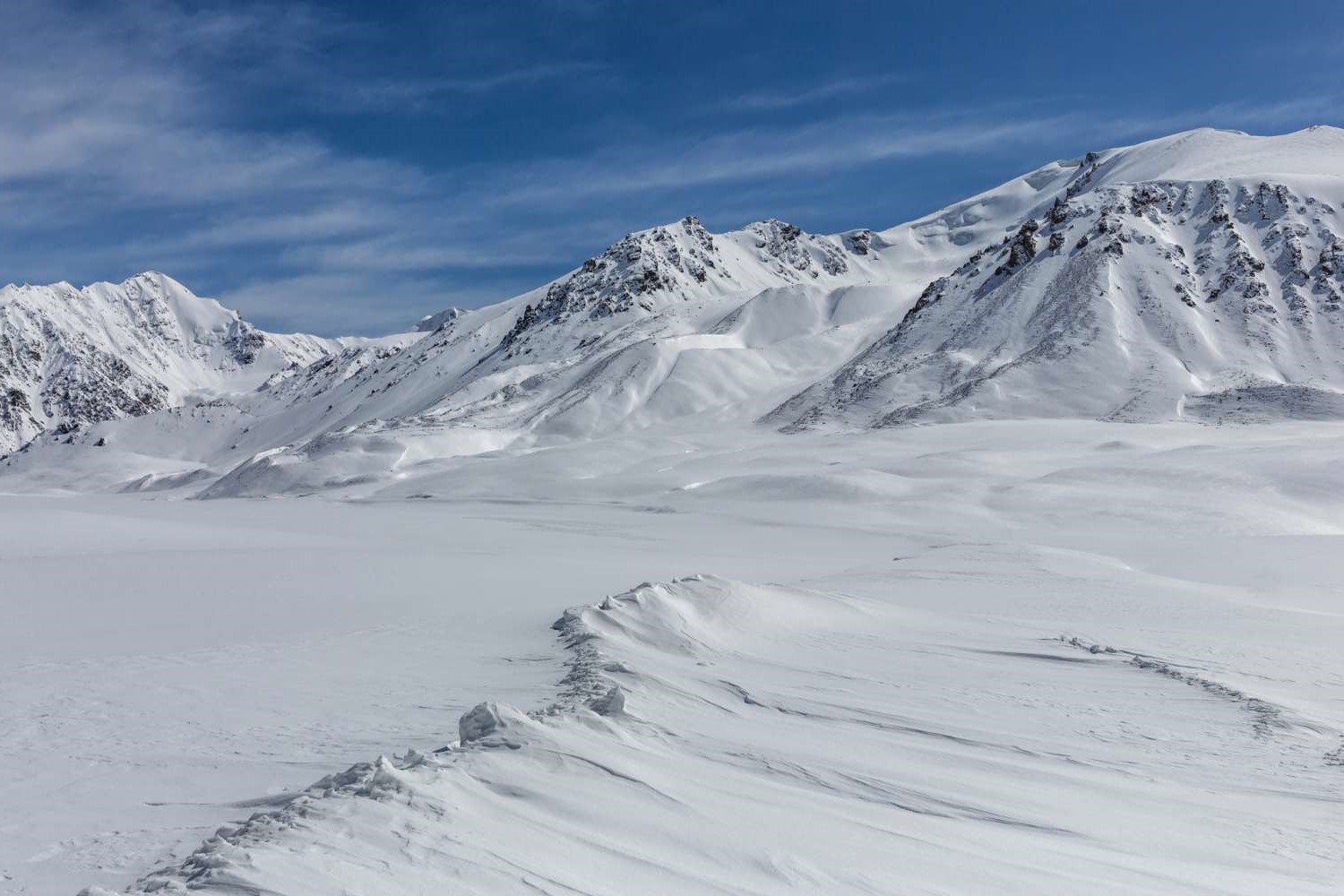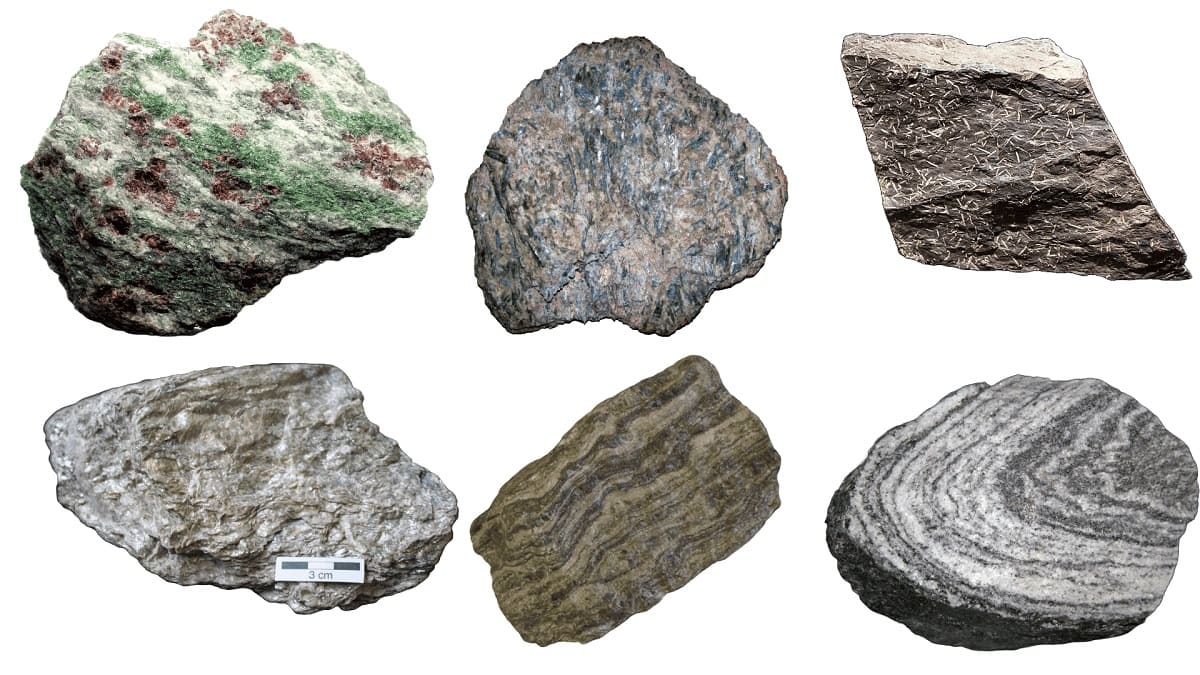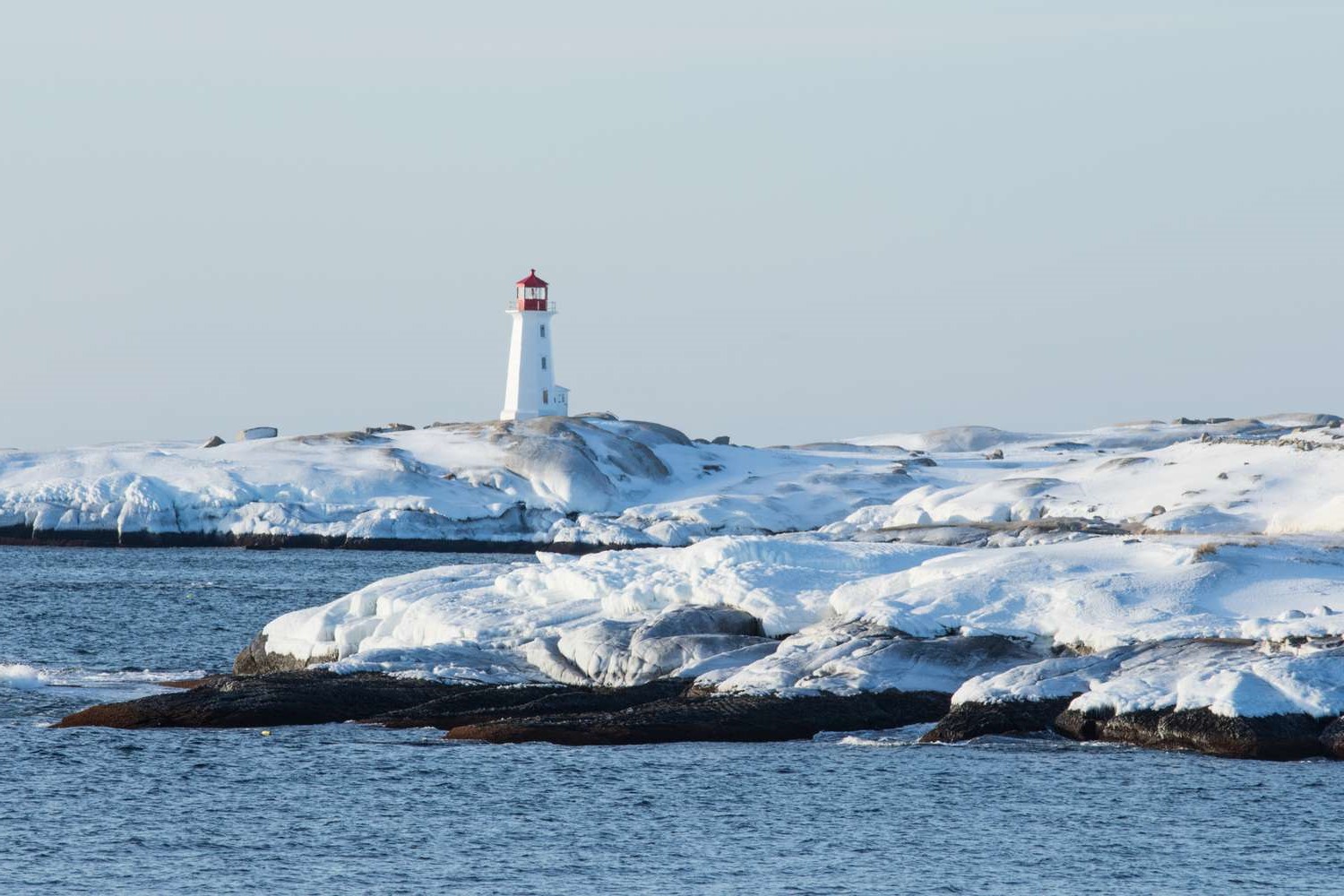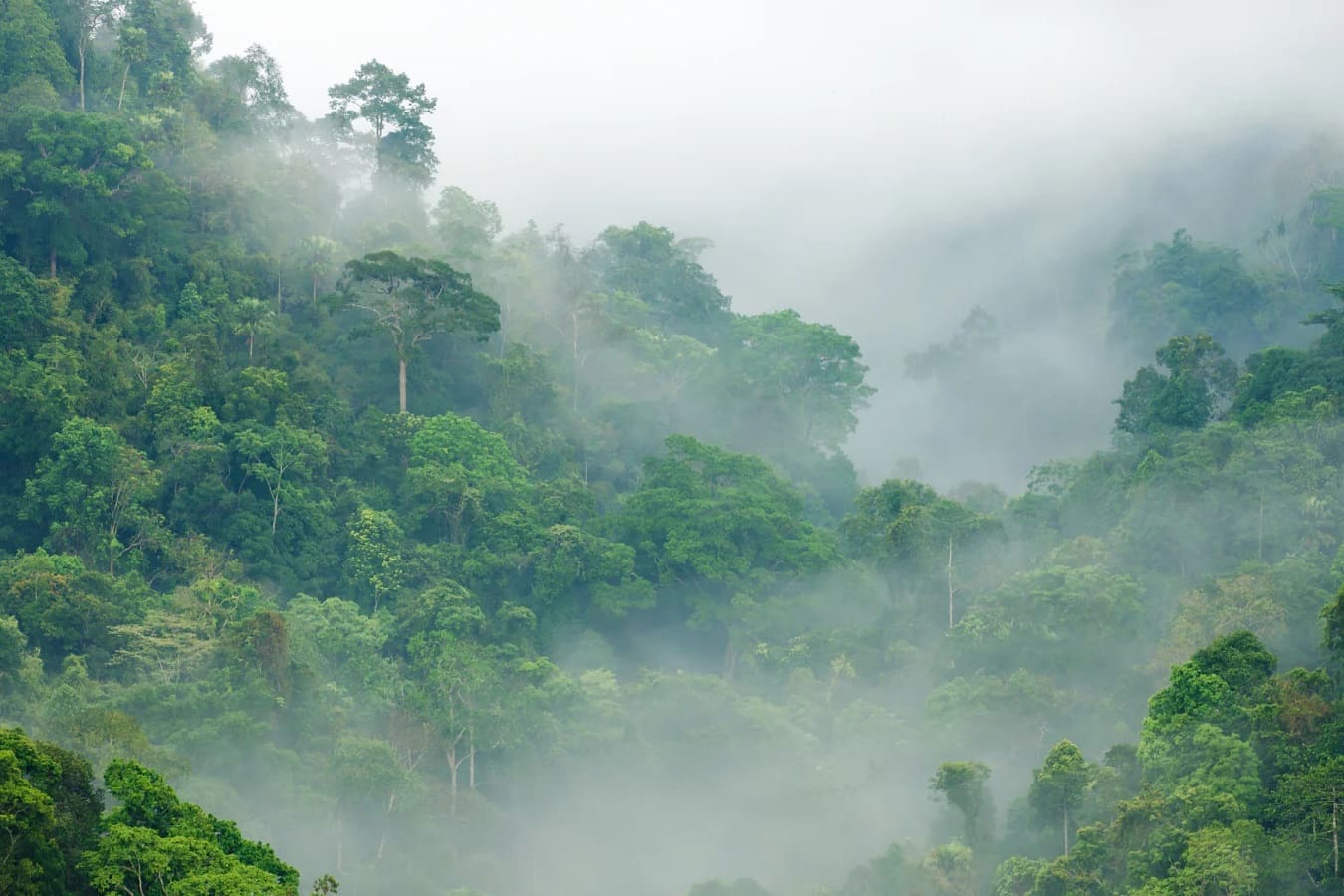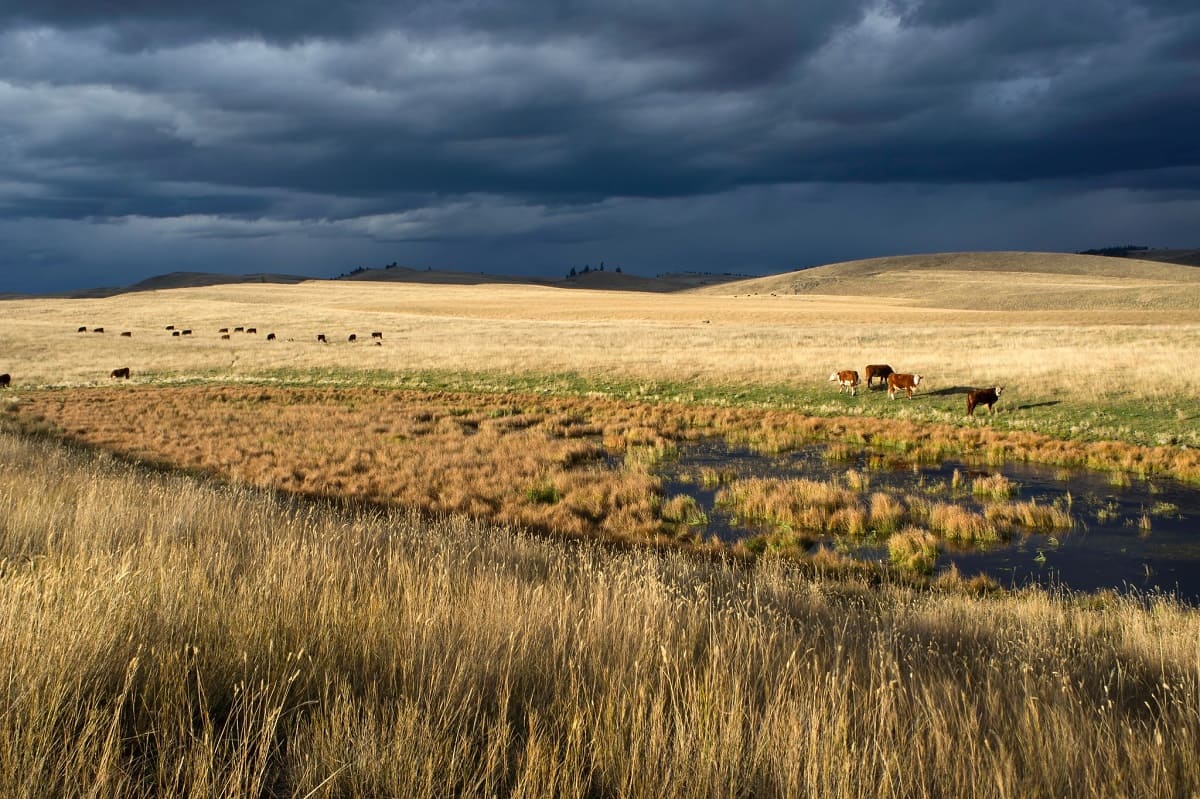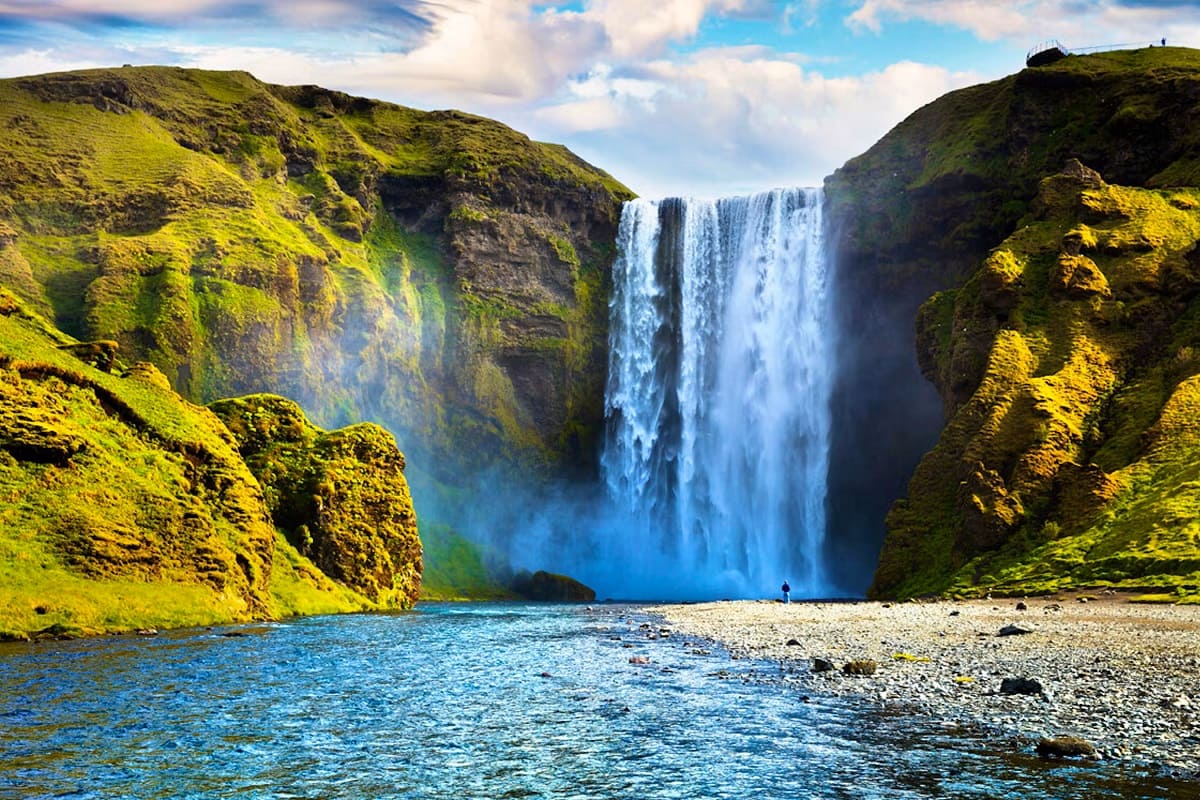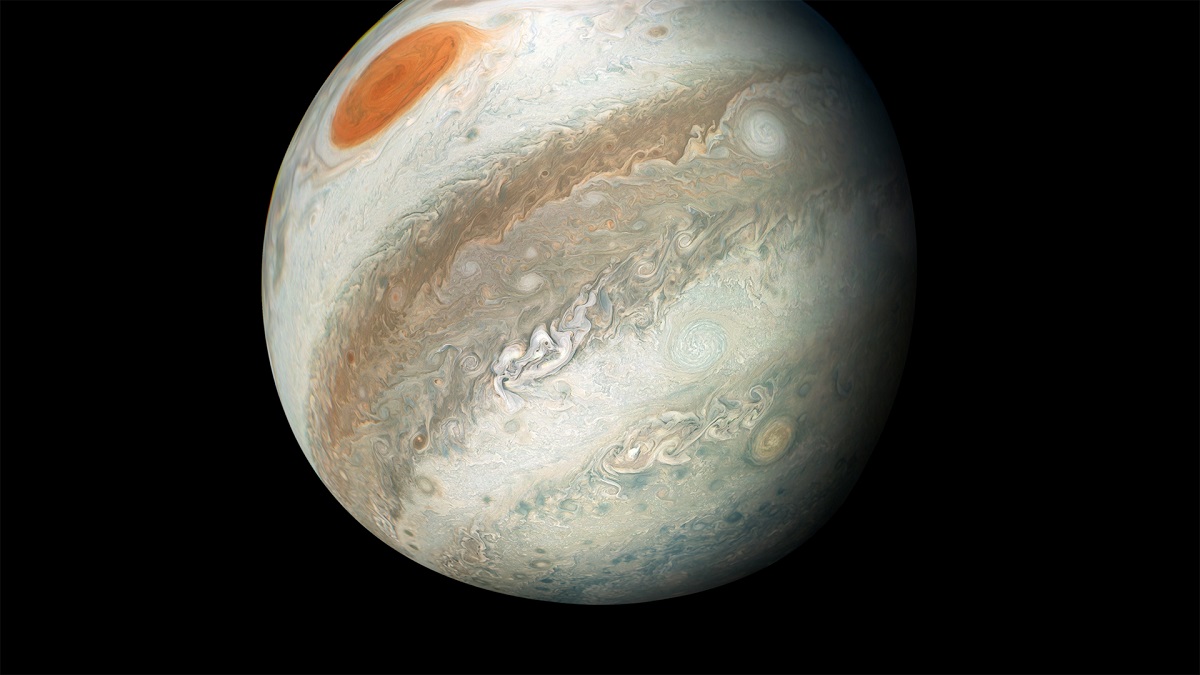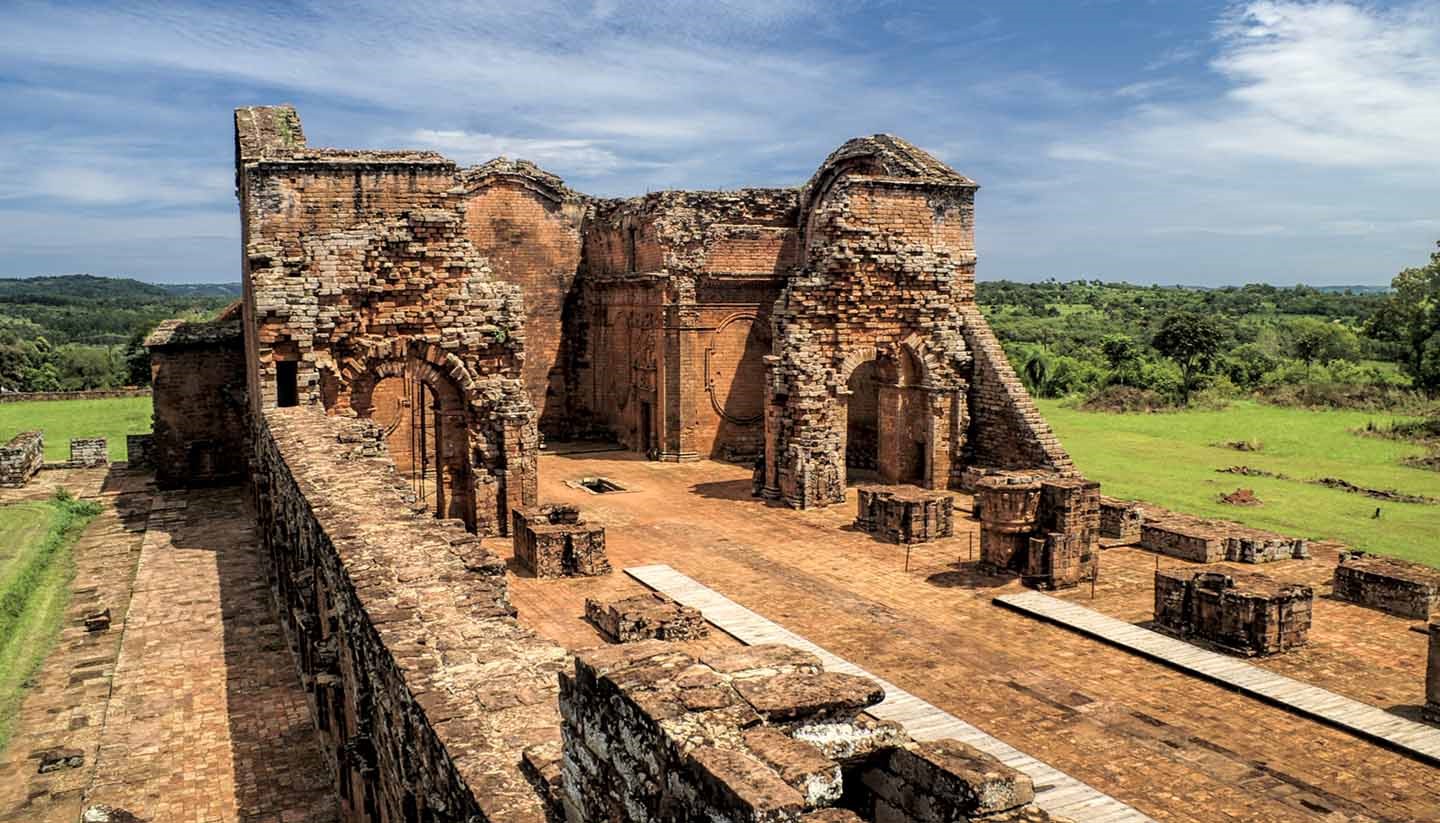Home>Weather and Climate>Exploring The Unique Characteristics Of The Tundra Biome
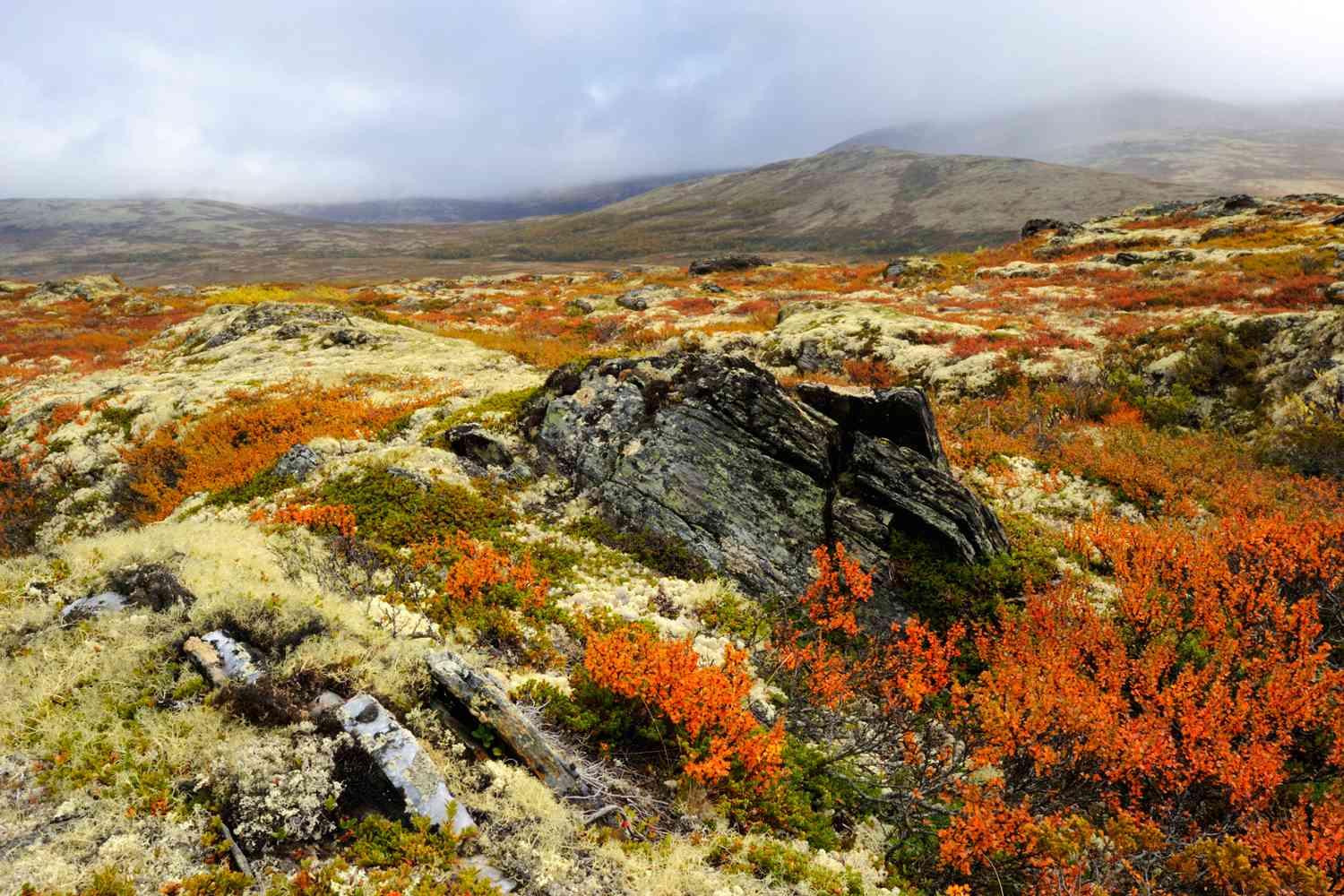

Weather and Climate
Exploring The Unique Characteristics Of The Tundra Biome
Published: March 1, 2024
Explore the weather and climate of the tundra biome, known for its unique characteristics and extreme conditions. Learn about the fascinating environmental factors that shape this distinctive ecosystem.
(Many of the links in this article redirect to a specific reviewed product. Your purchase of these products through affiliate links helps to generate commission for Temperatures.com, at no extra cost. Learn more)
Table of Contents
Introduction
The Tundra biome is a fascinating and unique ecosystem that spans the regions of the Arctic, Antarctic, and high mountain ranges. It is characterized by its extreme cold temperatures, low precipitation, and permafrost, making it one of the harshest environments on Earth. Despite these challenging conditions, the Tundra biome is home to a diverse array of flora and fauna that have evolved remarkable adaptations to thrive in this unforgiving landscape.
The word "tundra" is derived from the Finnish word "tunturia," which means "treeless plain." This succinctly captures the defining feature of the Tundra biome: the absence of trees due to the harsh climate. Instead, the landscape is dominated by vast stretches of low-lying vegetation, including mosses, lichens, grasses, and shrubs, which have adapted to survive in the cold and nutrient-poor soil.
The Tundra biome experiences long, bitterly cold winters and short, cool summers. During the winter months, temperatures can plummet to well below freezing, while the summer season brings a brief respite with temperatures hovering around 3-12°C (37-54°F). The limited precipitation in the form of snow and fog further contributes to the challenging conditions faced by Tundra organisms.
Despite its inhospitable nature, the Tundra biome is a crucial component of the global ecosystem. Its vast expanse of permafrost acts as a massive carbon sink, storing significant amounts of carbon dioxide and methane. Additionally, the Tundra plays a vital role in regulating the Earth's climate and supporting a unique assemblage of wildlife, including iconic species such as polar bears, Arctic foxes, caribou, and musk oxen.
In the following sections, we will delve deeper into the climate, flora, and fauna of the Tundra biome, exploring the remarkable adaptations of its inhabitants and the impact of human activities on this fragile ecosystem. Furthermore, we will examine the conservation efforts aimed at preserving the Tundra biome for future generations to appreciate and cherish.
The Climate of the Tundra Biome
The Tundra biome is renowned for its harsh and unforgiving climate, characterized by long, frigid winters and short, cool summers. This unique climatic pattern is primarily attributed to the Tundra's high-latitude location and its proximity to the poles. During the winter months, the Tundra experiences extreme cold, with temperatures plummeting to as low as -34°C (-30°F) in the Arctic and even colder in the Antarctic. The bitter cold is exacerbated by the absence of sunlight for extended periods, as the Tundra endures polar night, a phenomenon where the sun remains below the horizon for several months. This prolonged darkness intensifies the cold and creates a challenging environment for life to thrive.
Conversely, the summer season in the Tundra biome is relatively brief, lasting only a few months. Despite the temporary reprieve from the extreme cold, the temperatures during summer remain cool, ranging from 3-12°C (37-54°F). This limited warmth is insufficient to support the growth of trees, leading to the characteristic treeless landscape that defines the Tundra biome.
Precipitation in the Tundra biome is sparse, primarily taking the form of snow and fog. The annual snowfall contributes to the formation of a thick layer of permafrost, which underlies much of the Tundra landscape. Permafrost is a layer of soil, rock, and sediment that remains frozen for at least two consecutive years, and in some areas, it has been frozen for thousands of years. This permafrost layer presents a unique challenge for plant roots, as it restricts their ability to penetrate deeply into the soil, resulting in shallow root systems for Tundra vegetation.
The combination of extreme cold, limited sunlight, and permafrost creates a challenging environment for both flora and fauna in the Tundra biome. However, these harsh conditions have spurred the evolution of remarkable adaptations in Tundra organisms, allowing them to thrive in this unique and demanding climate.
The climate of the Tundra biome not only shapes the physical landscape but also plays a pivotal role in influencing the behavior, life cycles, and distribution of the diverse array of species that call this biome home. Understanding the intricacies of the Tundra's climate is essential for comprehending the delicate balance that exists within this extraordinary ecosystem.
Flora and Fauna of the Tundra Biome
The Tundra biome is home to a remarkable array of flora and fauna that have adapted to survive in the extreme cold, low precipitation, and permafrost. The vegetation in the Tundra is characterized by its resilience and ability to thrive in harsh conditions. Despite the challenging environment, the Tundra supports a diverse range of plant life, including mosses, lichens, grasses, sedges, and dwarf shrubs. These hardy plants have evolved unique adaptations to withstand the cold, nutrient-poor soil, and short growing season of the Tundra.
Mosses and lichens are among the first plants to colonize the Tundra, forming dense carpets that insulate the soil and provide crucial habitat and food sources for a variety of Tundra organisms. Grasses and sedges, such as cotton grass and Arctic oatgrass, are also prevalent in the Tundra biome, playing a vital role in stabilizing the soil and providing sustenance for herbivorous animals.
Dwarf shrubs, including willows, birches, and heaths, are well-adapted to the Tundra's harsh climate, often growing close to the ground to minimize exposure to the cold and wind. These shrubs serve as important food sources for herbivores and provide shelter for nesting birds and small mammals.
The Tundra biome is also home to a diverse array of fauna, including iconic species such as polar bears, Arctic foxes, caribou, musk oxen, and snowy owls. These animals have evolved remarkable adaptations to survive in the challenging Tundra environment. For instance, the polar bear, a symbol of the Arctic, is superbly adapted to the cold, relying on its thick fur and insulating layer of blubber to withstand the frigid temperatures. Additionally, the Arctic fox has a dense, warm coat and a keen sense of hearing, allowing it to locate prey beneath the snow.
Caribou, also known as reindeer, are well-suited to the Tundra's conditions, possessing specialized hooves for traversing snow and ice, as well as a thick coat for insulation. Musk oxen, with their dense, woolly fur and strong, compact build, are perfectly adapted to withstand the harsh Tundra climate.
The avian inhabitants of the Tundra, such as snowy owls and ptarmigans, have adapted to the cold by growing thick plumage and feathers on their legs and feet, providing insulation against the cold ground. These remarkable adaptations enable Tundra fauna to thrive in an environment that presents numerous challenges to survival.
The delicate balance between the flora and fauna of the Tundra biome is a testament to the resilience and adaptability of life in the face of adversity. The intricate web of interactions between Tundra organisms underscores the importance of preserving this unique ecosystem for future generations to appreciate and study.
Adaptations of Tundra Organisms
The Tundra biome presents a formidable array of challenges for its inhabitants, yet Tundra organisms have evolved remarkable adaptations to not only survive but thrive in this harsh environment. These adaptations are a testament to the resilience and ingenuity of life in the face of extreme adversity.
One of the most striking adaptations of Tundra organisms is their ability to withstand the extreme cold. Many species have developed specialized features to combat the frigid temperatures, such as thick insulating fur, feathers, or wool that provide essential warmth during the long, dark winters. The polar bear, for example, boasts a thick layer of blubber beneath its fur, serving as a highly effective insulator against the biting cold of the Arctic. Similarly, the Arctic fox has a dense, warm coat that provides vital protection from the elements.
In addition to insulation, Tundra organisms have also developed unique strategies for obtaining food in a landscape where resources are scarce. For instance, herbivorous animals like caribou and musk oxen have adapted to survive on a diet of tough, low-nutrient vegetation by possessing specialized digestive systems capable of extracting maximum nutrition from their food. Meanwhile, predatory species such as the Arctic fox and snowy owl have honed their hunting skills to capture elusive prey in the snow-covered terrain, relying on acute senses and stealth to secure their next meal.
Furthermore, Tundra plants have evolved ingenious mechanisms to thrive in the nutrient-poor soil and short growing season. Many Tundra plants, including mosses, lichens, and dwarf shrubs, have developed the ability to photosynthesize at low temperatures, enabling them to harness the limited sunlight and produce energy for survival. Additionally, their compact, low-lying growth forms help shield them from the harsh winds and conserve heat close to the ground.
The adaptations of Tundra organisms extend beyond physical attributes to encompass behavioral and reproductive strategies. Many species have synchronized their life cycles with the brief Tundra summer, maximizing the short window of opportunity for growth, reproduction, and raising offspring. This synchronization ensures the survival of their young in a landscape where the margin for error is slim.
These remarkable adaptations underscore the intricate relationship between Tundra organisms and their environment. The ability of these organisms to thrive in such a challenging biome serves as a testament to the resilience and adaptability of life in the face of adversity. Understanding and preserving these adaptations is crucial for safeguarding the delicate balance of the Tundra biome and the diverse array of life it supports.
Human Impact on the Tundra Biome
Human activities have exerted a significant impact on the delicate balance of the Tundra biome, posing a range of challenges to its unique ecosystems and inhabitants. One of the most pressing concerns is the rapid escalation of climate change, which has led to rising temperatures, thawing permafrost, and alterations in precipitation patterns. These changes have far-reaching consequences for Tundra organisms, disrupting their habitats and triggering a cascade of ecological effects.
The exploitation of natural resources, such as oil and gas extraction, mining, and logging, has also left a profound mark on the Tundra biome. These activities have resulted in habitat destruction, soil compaction, and contamination of water sources, jeopardizing the survival of Tundra flora and fauna. Furthermore, the construction of infrastructure, including roads, pipelines, and buildings, has fragmented Tundra habitats, impeding the movement of wildlife and exacerbating the loss of biodiversity.
Human presence in the Tundra has introduced invasive species, which outcompete native flora and fauna, leading to imbalances within the ecosystem. Additionally, pollution from industrial activities and waste disposal poses a threat to Tundra organisms, compromising their health and disrupting the intricate web of interactions that sustains the biome.
The traditional practices of indigenous communities, while historically harmonious with the Tundra environment, have also undergone changes due to modernization and globalization. These shifts have impacted the delicate equilibrium between human activities and the Tundra biome, altering traditional land use patterns and resource management practices.
The cumulative impact of these human activities has underscored the vulnerability of the Tundra biome and the urgent need for conservation and sustainable management strategies. Recognizing the interconnectedness of human well-being and the health of the Tundra biome is essential for fostering a harmonious coexistence between human societies and the natural world.
Efforts to mitigate the human impact on the Tundra biome must prioritize the preservation of its unique biodiversity, the restoration of degraded habitats, and the promotion of sustainable practices that respect the ecological integrity of this extraordinary ecosystem. By fostering a deeper understanding of the intricate relationships within the Tundra biome and embracing a collective responsibility for its well-being, we can strive to minimize the negative impact of human activities and safeguard the Tundra for future generations to cherish and admire.
Read more: Exploring The Unique Ecosystem Of Estuaries
Conservation Efforts for the Tundra Biome
Conservation efforts for the Tundra biome are essential to safeguard its unique ecosystems and mitigate the impact of human activities on this fragile environment. Recognizing the critical importance of preserving the Tundra's biodiversity and ecological integrity, various initiatives and strategies have been implemented to address the pressing conservation challenges.
One of the primary focuses of conservation efforts in the Tundra biome is the protection of key habitats and the species that depend on them. This involves the establishment of protected areas, such as national parks, wildlife refuges, and conservation reserves, to safeguard critical Tundra ecosystems from further degradation and exploitation. These protected areas serve as havens for Tundra flora and fauna, providing essential refuge and undisturbed spaces for their survival.
Furthermore, conservation organizations and governmental agencies collaborate to conduct research and monitoring programs aimed at understanding the dynamics of Tundra ecosystems and the impacts of environmental changes. By gathering scientific data and insights, conservationists can develop informed management plans and conservation strategies tailored to the specific needs of Tundra habitats and species.
In addition to habitat protection and research, conservation efforts in the Tundra biome also encompass community engagement and collaboration with indigenous peoples. Recognizing the traditional ecological knowledge and stewardship practices of indigenous communities is crucial for the sustainable management of Tundra resources. By involving local communities in conservation initiatives, a holistic approach to preserving the Tundra biome can be achieved, integrating traditional wisdom with modern conservation practices.
Education and outreach programs play a pivotal role in raising awareness about the importance of the Tundra biome and the need for its conservation. By engaging the public, policymakers, and stakeholders, conservation organizations can foster a sense of stewardship and collective responsibility for the Tundra's well-being. These efforts aim to inspire individuals to become advocates for Tundra conservation and to support sustainable practices that minimize the impact on this delicate ecosystem.
Ultimately, the success of conservation efforts for the Tundra biome hinges on the collaboration and commitment of diverse stakeholders, including governments, conservation organizations, local communities, and the general public. By working together to implement effective conservation measures, we can strive to protect the Tundra biome for future generations, ensuring that its remarkable biodiversity and ecological processes endure for years to come.
Conclusion
In conclusion, the Tundra biome stands as a testament to the resilience and adaptability of life in the face of extreme environmental challenges. Its unique climate, characterized by long, frigid winters, short, cool summers, and permafrost, has shaped the evolution of a diverse array of flora and fauna that have thrived in this harsh landscape. The Tundra's treeless plains are adorned with hardy vegetation, including mosses, lichens, grasses, and shrubs, while iconic species such as polar bears, Arctic foxes, caribou, musk oxen, and snowy owls have carved out a niche in this unforgiving environment.
The adaptations of Tundra organisms, from specialized insulation against the cold to ingenious foraging strategies and synchronized life cycles, underscore the remarkable resilience of life in the face of adversity. These adaptations have enabled Tundra organisms to not only survive but to flourish in a biome where the margin for error is slim and the challenges are formidable.
However, the Tundra biome is not immune to the impact of human activities. Climate change, habitat destruction, pollution, and the introduction of invasive species have placed significant pressure on the delicate balance of Tundra ecosystems, threatening the survival of its unique flora and fauna. The traditional practices of indigenous communities have also undergone changes, impacting the equilibrium between human activities and the Tundra biome.
Amid these challenges, conservation efforts have emerged as a beacon of hope for the Tundra biome. Through the establishment of protected areas, research and monitoring programs, community engagement, and education initiatives, dedicated individuals and organizations are working tirelessly to preserve the Tundra's biodiversity and ecological integrity. By fostering a deeper understanding of the intricate relationships within the Tundra biome and embracing a collective responsibility for its well-being, we can strive to minimize the negative impact of human activities and safeguard the Tundra for future generations to cherish and admire.
The Tundra biome serves as a poignant reminder of the delicate balance that exists within our planet's diverse ecosystems. Its resilience in the face of adversity and the tireless efforts to conserve its unique biodiversity inspire hope for a future where human activities and the natural world coexist harmoniously. By recognizing the intrinsic value of the Tundra biome and embracing a commitment to its preservation, we can ensure that this extraordinary ecosystem continues to thrive for generations to come.
